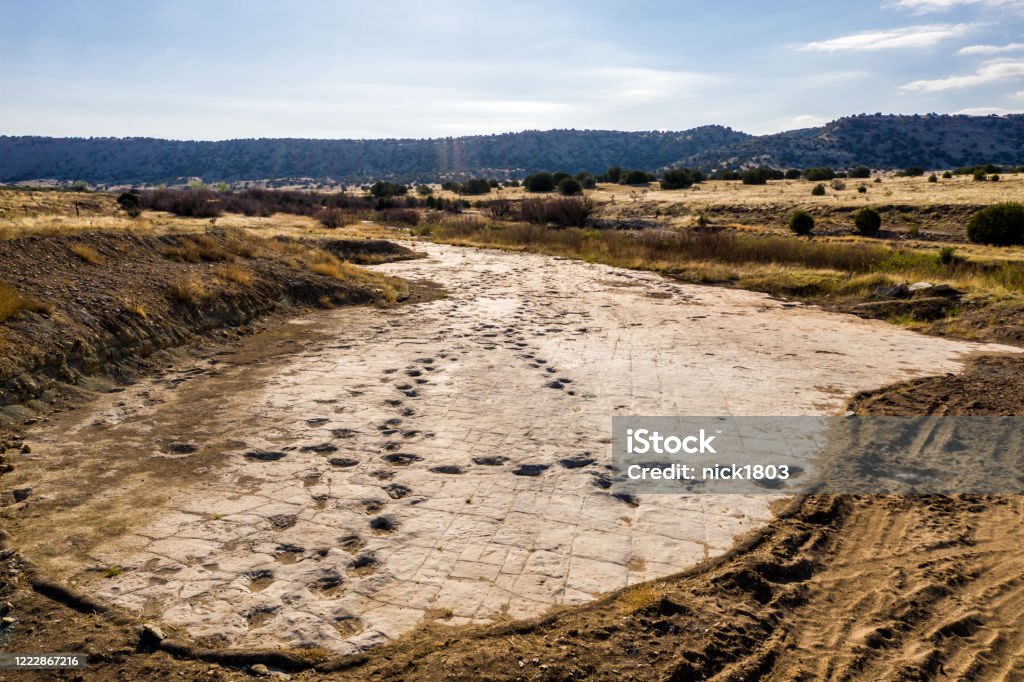Ancient Footprints In North America
Anthropology

When the public announcement was made in 2021 regarding the discovery of fossilized footprints in what is now known as New Mexico, it had a profound impact on the field of archaeology, as it appeared to challenge and revise a significant portion of the human narrative. Recent research has now emerged, providing additional evidence to support the significance of these footprints.
Despite their remarkably well-preserved condition, these footprints were actually imprinted into mud approximately 21,000 to 23,000 years ago, as determined by radiocarbon dating of the seeds from an aquatic plant that were found both above and below the fossils.
This revised timeline has had a profound effect on our understanding of human history in the Americas, which was the last landmass to be inhabited by prehistoric populations. The 61 footprints that were dated and discovered in the Tularosa Basin, near the periphery of an ancient lake within White Sands National Park, were created during a period when many scientists believe that extensive ice sheets had effectively blocked human migration into North America. This suggests that humans may have arrived in the region even earlier than previously thought.
Nevertheless, certain archaeologists raised doubts regarding the chronological accuracy of the footprints as determined by the preliminary discoveries. These skeptics pointed out that aquatic vegetation, such as Ruppia cirrhosa, which was utilized in the 2021 investigation, has the ability to obtain carbon from dissolved particles in the water rather than from the atmosphere. This phenomenon can potentially lead to an erroneously early estimation.
However, in a subsequent study released on Thursday in the esteemed journal Science, the researchers have presented two additional strands of evidence to substantiate their original dating.
"In the midst of the publication of the original work, we were actively progressing towards the examination of our findings through various lines of evidence," stated Kathleen Springer, a research geologist at the US Geological Survey and co-lead author of the new Science paper, in a press release. "We possessed confidence in our initial determinations, supported by robust geological, hydrological, and stratigraphic evidence. Nevertheless, we recognized the crucial necessity of independent chronological control."
The question of when and how early humans initially migrated to the Americas has long been a subject of debate and remains inadequately comprehended. Current estimations regarding the arrival of the first inhabitants range from 13,000 to over 20,000 years ago. However, the earliest archaeological proof of human settlement in the region is scarce and frequently contentious, thus emphasizing the significance of the footprints."
In their subsequent investigation, the researchers directed their attention towards the radiocarbon dating of conifer pollen, as it originates from a terrestrial plant and circumvents the complications that may arise when dating aquatic plants such as Ruppia, as stated in the press release.
The scientists were able to isolate approximately 75,000 pollen grains, obtained from the same strata as the original seeds, for each sample. A multitude of grains is necessary to attain the requisite mass for a single radiocarbon measurement. The age of the pollen corresponded with that of the seeds.
Furthermore, the team employed a dating technique referred to as optically stimulated luminescence, which determines the most recent instance that quartz grains in the fossil sediment were exposed to sunlight. This method indicated that the quartz had a minimum age of 21,500 years.
Jeff Pigati, USGS geologist and co-lead author of the study, stated, "The initial response from certain sectors of the archaeological community was that the precision of our dating was inadequate to support the remarkable assertion that humans were present in North America during the Last Glacial Maximum. However, our targeted methodology in this current research yielded significant results."
This study serves to shed light on the extensive narrative of human evolution; however, there are still numerous aspects that remain undisclosed regarding the colonization of the Americas.
The means by which early humans arrived, whether by means of watercraft or traversing a land bridge from Asia, remains uncertain. Furthermore, despite advancements in genetic evidence, it remains unclear whether a single or multiple populations of early modern humans undertook the arduous journey.
Bente Philippsen, an esteemed associate professor and expert in radiocarbon dating at the Norwegian University of Science and Technology, asserts that determining the age of pollen grains is a complex process that carries the inherent risk of contamination.
Furthermore, the commentator highlighted in an accompanying publication that luminescence-based dating methods exhibit significant measurement uncertainties.
Nonetheless, she asserted that the comprehensive findings of the recent study strongly suggest the existence of human presence in the Americas during the Last Glacial Maximum, a period spanning from 19,000 to 26,000 years ago. This era was characterized by the coverage of two immense ice sheets across the northern third of North America, extending as far south as New York City, Cincinnati, and Des Moines, Iowa.
Given the ice and frigid temperatures prevailing during that time, it would have been impossible for individuals to undertake a journey between Asia and Alaska, indicating that the individuals responsible for the footprints likely arrived much earlier.
Jennifer Raff, an associate professor at the University of Kansas and the author of "Origin: A Genetic History of the Americas," expressed that the discovery of the footprints is a significant development in the field. She stated, "The American continents were the final destination in the global journey of modern humans. It is intriguing to contemplate the experience of entering a new region and confronting the obstacles and prospects that novel environments would have offered."






Comments
There are no comments for this story
Be the first to respond and start the conversation.